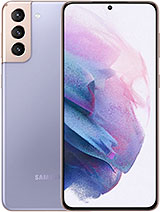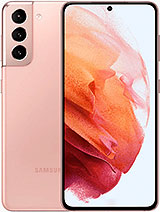Samsung Galaxy S21 vs. iPhone 12 Camera Comparison By M-Galaxy
So both phones were set to 12MP 4:3 aspect ratio and the whole comparison was made in the Auto mode. Without further ado let’s see which phone is better! I tell you it’s terrible weather over here but fortunately, I was able to spot some sun to make those shots. This picture really emphasizes that beautiful sunny winter scenery. Both came out looking great. Although I have to go with the Samsung. Looking at the sun area, the extra HDR strength is really on point here.
Definitely a smaller difference over here. The Galaxy has that slight pop in the colors on this sun reflection which gives it a tad nicer look. On the other hand, the iPhone’s picture is a little brighter. To be fair I think both are different but equally good here. A similar story with the ultra-wide-angle module.
Both perform very closely. Although if I had to choose maybe I would lean towards the iPhone. I think it has slightly nicer colors, especially in the sky area. Both are extremely close but once again I am able to see slightly finer colors in the sky coming from the iPhone. Over the years of comparisons, I’ve noticed the sky area is often the iPhone’s strong advantage.
However, unlike the Galaxy S20 (at least with the first software version) which I’ve tested last year, the S21 comes with super-strong HDR, even stronger than in the iPhone. Taking a look at those trees I can definitely notice that. Same for the ultra-wide angle lens. Although I think the S21 could handle that sun reflection in a bit better manner. …and it looks like that lens disadvantage is also visible in the standard angle mode, at least sometimes.
Here the iPhone is more clear and doesn’t have that reddish tint from the sun reflection. Maybe it won’t be that important for most people but I think caring for those small details is justifiable, especially considering that the overall performance is pretty similar at this point. So like I’ve said – this year Samsung definitely boosted the HDR algorithm. The extra amount of detail in the highlights and shadows can definitely be more appealing to some of you! Though others may prefer the iPhone for perhaps more neutrality. Personally, HDR alone, I like the S21 a little bit more.
That’s said, the color science remains slightly more pleasing on the iPhone in my opinion. In this one, the S21 has too much of that blueish tint in the snow area and the sky just doesn’t look as good as in the iPhone. The same color difference in here. The iPhone has a slight advantage in the sky area, even though, again, it may not be that significant for some of you. It’s also worth mentioning that unlike the standard iPhone 12, The Samsung Galaxy S21 provides a telephoto lens.
Let’s see if Apple’s digital zoom can somehow match the level of performance from the dedicated module found on the Samsung. Okay, I think the answer is pretty clear. There is less detail and much more processing (mainly sharpening) compared to Samsung. Just take a look at the edges of those cables. …and again, much more processing, less detail, and artificially sharpened edges on the iPhone.
Still, the picture is usable and I wouldn’t really care so much about the telephoto mode since I don’t use it very often but, I mean, we have to give it to the Samsung. Going to some close-ups first thing we can notice is the extra saturation coming from the Samsung which I see on almost every generation every year. Though, it’s worth to say the scene optimizer could emphasize that difference even more in here. Once more we can see the stronger HDR on the S21 which I think looks pretty cool. Going into the crop I think I can also spot a bit more information and more surprisingly less sharpening compared to the iPhone.
And let’s zoom in here on this wood. Again, there are just subtle little details more easily visible in the S21’s picture. Even though I am slightly nitpicking here because honestly, both have really good amount of detail. I just see a tad more information in the Samsung. I am really satisfied with the result which is really strange considering the performance of the Galaxy S20 I’ve tested last year which had really bad optical distortions and etc.
I guess Samsung really somehow fixed that. …but I’ve noticed one thing I criticized in the S20 still present on the new model. Autofocus reliability. For example, here I wanted it to focus on this pine cone, as you see without luck. It only happens sometimes but I am saying there is just a little room for improvement since I never had such issues with the iPhone.
When it comes to video quality the iPhone has some edge in terms of the dynamic range and overall colors in my opinion. As you see there is just a tad more information in the ground area – mainly in shadows… and the snow for example looks too blueish on the Samsung in comparison with the iPhone 12. What’s opposite to the previous years is that now Samsung appears to have less sharpening than the iPhone. I am not sure which look I prefer yet. I think less sharpening would generally be better for good lightning while that slight additional processing found in the iPhone looks to be appropriate for conditions such you see in this footage.
Stabilization looks to be about the same if not a bit better on the Samsung. The S21 however is indisputably more stable than the iPhone 12 in the ultra-wide angle mode. Really cool, it almost looks like the GoPro HyperSmooth. …but just like with the stills I encountered an autofocus issue on the S21 a few times. After focusing on some object at a close distance it just couldn’t go back into the previous focusing state.
Anyway, I am not super mad at this since I think it can be solved via a software update. Oh, and I would almost forget that we have 8K recording option on the S21. Though just like last year it still remains a gimmick in my eyes. Compared to the 4K it has much worse stabilization, slower frame rate and poor autofocus. Too bad they didn’t implement the idea of downsampling 6K to 4K video instead.
It would be much more useful than that. In low-light, it looks like iPhone 12 does a few tricks to counteract unfavorable warm lighting in this scene. Though in the result the S21 does feel more accurate and realistic but ideally I would prefer something in the middle between the two. …on the other hand that counteractive processing here in the iPhone is really on point and it made this picture look more natural and pleasing to look at so I guess it’s a mixed bag. In the crop however, I can definitely see more texture and richness in this Focal speaker coming from the S21 in comparison with more flatness from the iPhone.
At this point, I think you get the idea that general low-light performance is really strong and close on both. Zooming in on this logic board reveals once again a bit more sharpening from the iPhone while the level of detail stays more or less the same. I am happy to report that Samsung now can do automatic night-mode just like the iPhone. Although I’ve noticed there is definitely room for improvement since it’s not as reliable. Here – at the first attempt the S21 didn’t recognize the need for night mode use therefore as you can see the picture looks much worse than from the iPhone 12.
Then I’ve tried again, adjusting the angle of this shot a bit and it worked and when it did, in fact, the picture came out even brighter compared to the iPhone. Here, the Galaxy S21 appears to have a bit more accurate colors and it’s also a tad brighter probably due to slightly longer exposure. Other times or perhaps even more often the iPhone provides with better color accuracy, as you can see in this shot. However, night mode doesn’t appear to work automatically in the ultra-wide angle mode on the Samsung. Honestly, I don’t understand that decision but hopefully, Samsung will fix that with future software updates.
Though when I’ve chosen it manually it looks to perform better than on the iPhone. The picture looks a bit brighter and more clear, especially in the ground area. So in the end I think both perform pretty closely in the standard wide mode and in the ultra wide angle mode Samsung appears to have a slight advantage over the iPhone. Video recordings in those extremely poor lightning conditions show that the iPhone 12 is a bit brighter and provides more natural color tones. The Samsung looks too yellowish.
I would also say the noise is handled a bit better. I can see a lot more overall noise and color noise coming from the Galaxy S21. So that would be all for this comparison. Let me know did you prefer the iPhone or the Samsung because ultimately which one wins is up to you. So, decide in the comments! Thanks for watching and consider subscribing to my channel for future comparisons like that.
See you in the next one! Peace!.
Source : M-Galaxy


























